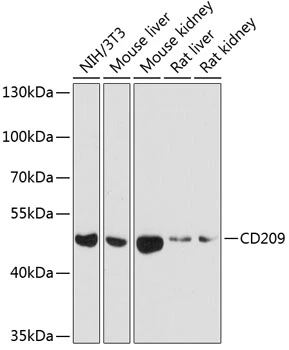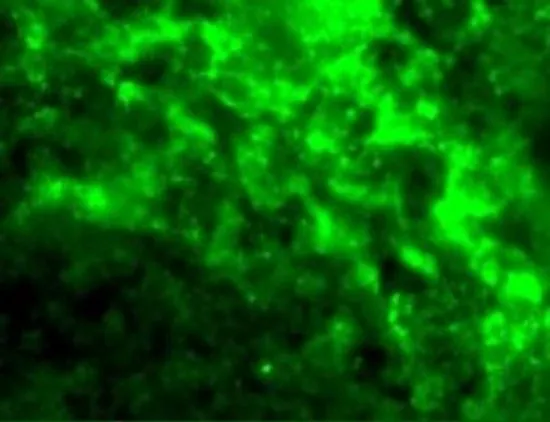
IHC-P analysis of human lymph node tissue using GTX31656 DC-SIGN antibody. Working concentration : 20 μg/ml
DC-SIGN antibody
GTX31656
ApplicationsWestern Blot, ELISA, ImmunoHistoChemistry, ImmunoHistoChemistry Paraffin
Product group Antibodies
ReactivityHuman
TargetCD209
Overview
- SupplierGeneTex
- Product NameDC-SIGN antibody
- Delivery Days Customer9
- Application Supplier NoteWB: 1 - 2 microg/mL. IHC-P: 10 microg/mL. *Optimal dilutions/concentrations should be determined by the researcher.Not tested in other applications.
- ApplicationsWestern Blot, ELISA, ImmunoHistoChemistry, ImmunoHistoChemistry Paraffin
- CertificationResearch Use Only
- ClonalityPolyclonal
- Concentration1 mg/ml
- ConjugateUnconjugated
- Gene ID30835
- Target nameCD209
- Target descriptionCD209 molecule
- Target synonymsCDSIGN, CLEC4L, DC-SIGN, DC-SIGN1, hDC-SIGN, CD209 antigen, C-type lectin domain family 4 member L, HIV gpl20-binding protein, dendritic cell-specific ICAM-3-grabbing non-integrin 1, dendritic cell-specific intercellular adhesion molecule-3-grabbing non-integrin, dendritic cell-specific intracellular adhesion molecules (ICAM)-3 grabbing non-integrin
- HostRabbit
- IsotypeIgG
- Protein IDQ9NNX6
- Protein NameCD209 antigen
- Scientific DescriptionThis gene encodes a transmembrane receptor and is often referred to as DC-SIGN because of its expression on the surface of dendritic cells and macrophages. The encoded protein is involved in the innate immune system and recognizes numerous evolutionarily divergent pathogens ranging from parasites to viruses with a large impact on public health. The protein is organized into three distinct domains: an N-terminal transmembrane domain, a tandem-repeat neck domain and C-type lectin carbohydrate recognition domain. The extracellular region consisting of the C-type lectin and neck domains has a dual function as a pathogen recognition receptor and a cell adhesion receptor by binding carbohydrate ligands on the surface of microbes and endogenous cells. The neck region is important for homo-oligomerization which allows the receptor to bind multivalent ligands with high avidity. Variations in the number of 23 amino acid repeats in the neck domain of this protein are rare but have a significant i
- ReactivityHuman
- Storage Instruction-20°C or -80°C,2°C to 8°C
- UNSPSC12352203

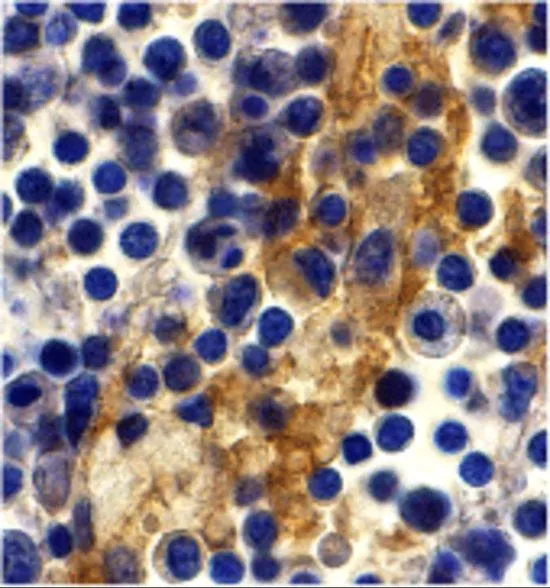





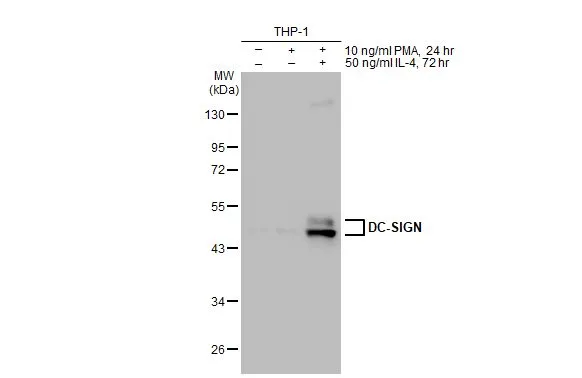
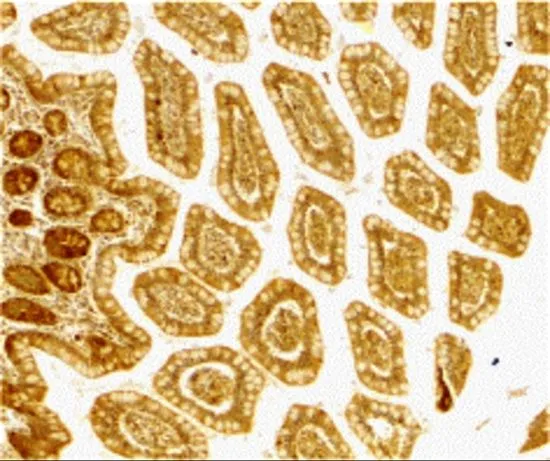
![IHC-P analysis of human lung carcinoma tissue using GTX34673 DC-SIGN antibody [C209/1781].](https://www.genetex.com/upload/website/prouct_img/normal/GTX34673/GTX34673_20200115_IHC-P_676_w_23060801_142.webp)
